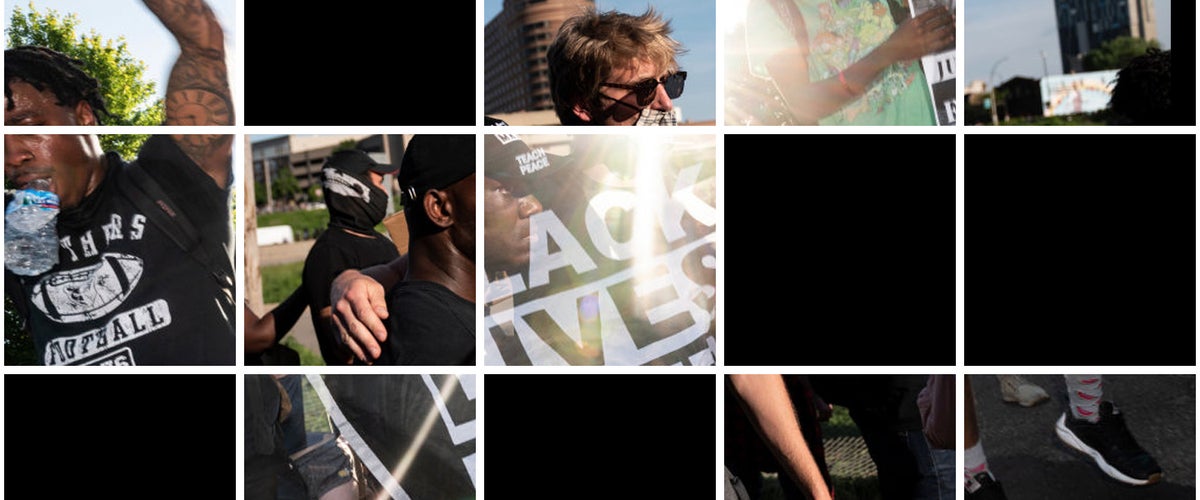#BlackoutTuesday started out as a day for non-Black allies to amplify Black voices and acknowledge the ongoing protests following the death of George Floyd at the hands of Minneapolis police. But as the message went viral, it had the opposite effect: The black squares took over Instagram and drowned out vital information.
Blackout Tuesday began as a protest against racism and inequality in the music industry. Music executives Jamila Thomas and Brianna Agyemang launched the initiative #TheShowMustBePaused to encourage Black people to take time for their mental health and non-Black allies to have difficult conversations about racism with family and peers.
“It is a day to take a beat for an honest, reflective and productive conversation about what actions we need to collectively take to support the Black community,” the women said in a statement on their website, noting that this is not just a 24-hour initiative.
But the black squares people started posting, often with Black Lives Matter-related hashtags, aren’t part of the original message. As Agyemang made clear on Instagram, #TheShowMustBePaused supports using the hashtag #BlackLivesMatter only to offer information. If not, she wrote, “type out Black Lives Matter with no hashtag so we do not inadvertently mute viral dialogue in a sea of black voices.”
However, as the movement gained steam in Hollywood, the hashtag #TheShowMustBePaused fell behind. Instead, music artists and celebrities with huge social followings like Drake, Mahershala Ali and Reese Witherspoon began posting black squares to their Instagram grids on Tuesday with the hashtag #BlackoutTuesday.
Brands and sports teams then joined in, including fashion label Rodarte, the NBA team Oklahoma City Thunder and even Peppa Pig. Public relations companies and TV channels like Britain’s ViacomCBS channels also went dark to support protests against the death of George Floyd.
As of Tuesday afternoon, the hashtag #BlackoutTuesday has been used over 16.5 million times on Instagram.
The Digital Sharpie Effect
For some activists, the problem isn’t with the new hashtag. It’s the use of longstanding hashtags like #BlackLivesMatter on today’s black grid photos. They take up coveted space.
Activists and organizers use popular hashtags like #BlackLivesMatter to share important news, dispel misinformation and offer education. “Hashtags monopolize attention and are an archive of information,” writer Najma Sharif tells MEL.
The hashtag #BlackLivesMatter has been used over 15 million times on Instagram, but now the top and most recent posts are dominated by black boxes. This type of erasure or suppression of information online is known as digital Sharpie. “This is almost worse than misinformation. Now you have no information,” Sharif says.
It has come to my attention that many allies are using #BlackLivesMatter hashtag w black image on insta. We know that’s it no intent to harm but to be frank, this essentially does harm the message. We use hashtag to keep ppl updated. PLS stop using the hashtag for black images!! pic.twitter.com/eG2fPaybNW
— Kenidra4Humanity ~ BLACK LIVES MATTER ~ (@KenidraRWoods_) June 2, 2020
Blackout Tuesday: How to Use Your Instagram Feed for Good
If you’re an ally who wants to participate in Blackout Tuesday, accompany a black square with information on protests, donations, petitions and funds related to Black Lives Matter initiatives, organizers say.
“Only adding a black photo to your page does not help your followers or who that image may reach,” says Precious Jackson, a writer, activist and college student in Pennsylvania. “The caption should include information and where to find it.”
So people have been misinformed about #BlackOutTuesday please reshare this to set the record straight. If you have already made a post edit it & make the adjustments. Also, only include the tags #BlackOutTuesday, #BlackOutDay2020 & #MAGA (to flood their tag). Do not tag BLM pic.twitter.com/Y5OZblDIBg
— PJ (@normaalgirrl) June 2, 2020
If you’ve posted the square, tap the three dots in the upper-right-hand corner of the post and click edit. Contrary to what you might have heard, removing the hashtag does remove the post from the trending feed.
In response to the overwhelming black grid posts, some activists began utilizing the day’s momentum to flood popular alt-right hashtags with black boxes to suppress anti-Black propaganda and misinformation. Six of the top nine #MAGA posts and all top #AllLivesMatter posts now feature black grids.
What’s important, according to activists and organizers, is for non-Black allies to refuse to stay silent. Don’t fear misspeaking. Sharif says it’s good that people are “being radicalized and gaining somewhat of a political education — even if that’s Political Education 101.”
Instead, for allies looking to educate themselves, Jackson advises that we share information from trusted Black leaders of the movement, not celebrities with no organizing experience. “Allies who are non-Black should amplify the voices of the Black community. We appreciate their support, but it is only useful when our message gets across,” Jackson says.
Instagram rn pic.twitter.com/3PCkm5oitR
— raina (@hotfreshpizza) June 2, 2020

